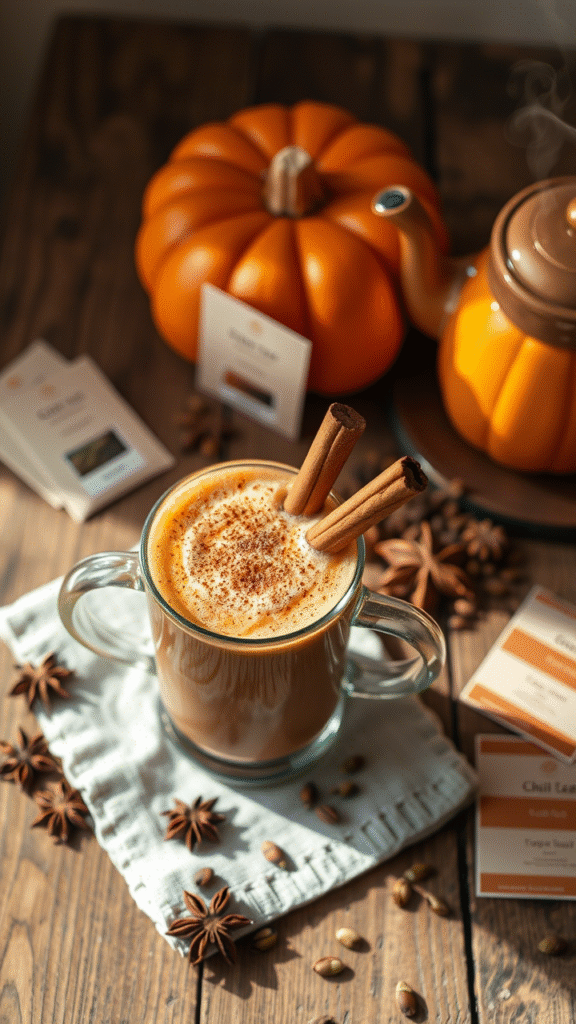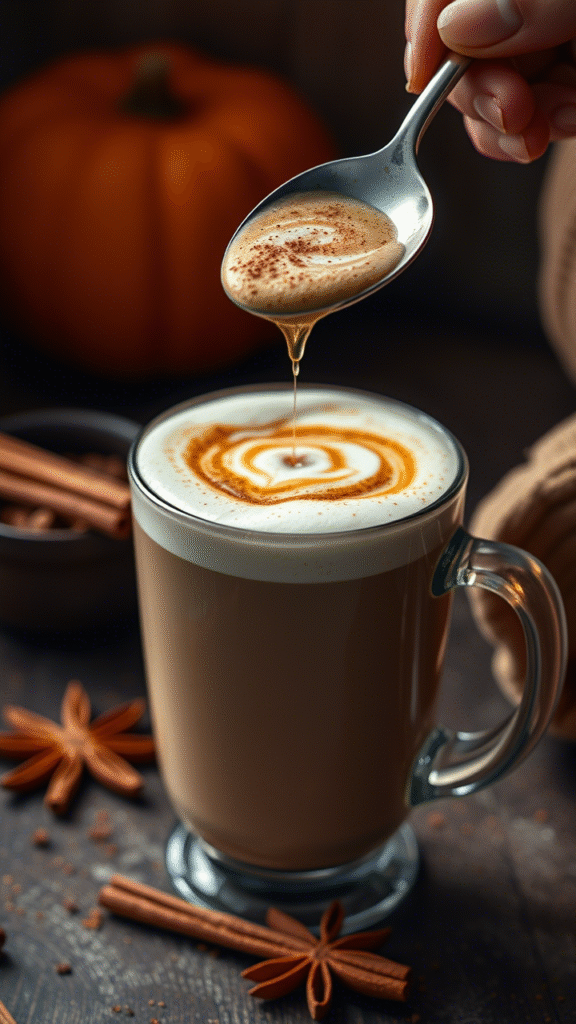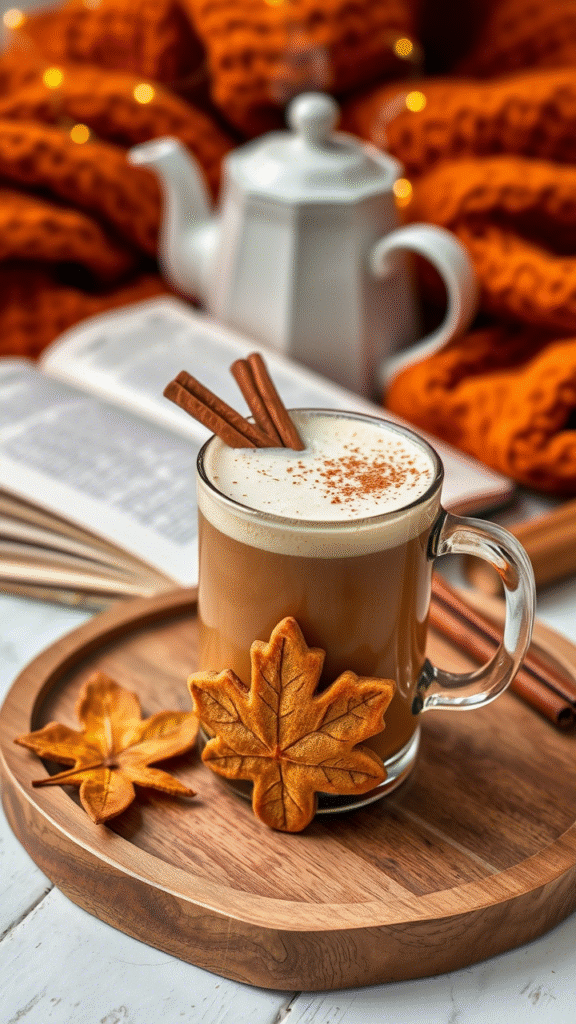Ever found yourself craving something that tastes like fall but feels like a warm hug? That’s exactly what a Pumpkin Chai Tea Latte delivers. This drink ain’t just a trendy fall fad; it’s a soulful blend of spice, creaminess, and subtle sweetness that dances on your palate. As a chef who’s spent years chasing that perfect balance between tradition and innovation, I can tell you—this latte is more than just a pumpkin-flavored beverage. It’s a ritual, a nod to autumn’s bounty, and an art form in a cup.
Let’s dig in deeper. This latte mixes the rich, comforting notes of chai—a centuries-old spiced tea—with the velvety smoothness of pumpkin puree and milk. Unlike your typical chai latte, the pumpkin twist brings in natural sweetness and earthiness, elevating the spice blend to new heights. The magic here? It’s in how the spices and pumpkin interact, warming your insides without overwhelming the delicate black tea base.
Ingredients & Substitutions: The Backbone of Flavor

When you get into pumpkin chai lattes, ingredient quality is king. You want spices that smell like a marketplace in India and pumpkin puree that’s fresh, vibrant, and not too watery.
- Black Tea Leaves (Assam or Darjeeling): Go loose-leaf if you can. Tea bags often skimp on flavor. Assam’s malty richness stands up well to the spices.
- Pumpkin Puree: Homemade is best—roast fresh pumpkin, then mash or blend it. Canned pumpkin works in a pinch, but avoid pumpkin pie filling; it’s loaded with sugar and spices.
- Spices: Cinnamon sticks, cardamom pods, cloves, ginger, black peppercorns, and star anise. Freshly ground is a game-changer here. Pre-ground spices lose that punch after a while.
- Milk: Whole milk adds creaminess, but oat milk or almond milk are stellar dairy-free alternatives. Oat milk, in particular, froths nicely and has a mild sweetness.
- Sweetener: Brown sugar or maple syrup complements pumpkin’s natural sweetness better than white sugar. For keto or diabetic-friendly versions, monk fruit or erythritol work well.
Got allergies or diet restrictions? No worries. Swap black tea for a robust rooibos if you want a caffeine-free option. If pumpkin isn’t your thing, but you dig the chai, try butternut squash puree instead—it’s just as luscious.
Step-by-Step Instructions: Nailing That Perfect Cup
- Prepare the Chai Base
Start by toasting your whole spices in a dry pan for 1-2 minutes till fragrant. Toasting unlocks essential oils and amps flavor. Add water and bring to boil, then toss in your black tea leaves and simmer for about 5 minutes. Don’t overbrew; bitter tannins sneak in after 7 minutes. - Infuse Pumpkin and Milk
Stir in your pumpkin puree and milk. Heat gently—avoid boiling to keep milk from curdling or scorching. Simmer for 3-4 minutes so flavors meld but the drink stays smooth. - Sweeten and Serve
Add your sweetener of choice gradually, tasting as you go. Pour through a fine mesh strainer to catch the spices and tea leaves, then serve piping hot. Top with a sprinkle of cinnamon or nutmeg for flair.
Pro Tip: To get that silky froth, use a milk frother or vigorously whisk the latte right before serving.
Common Mistakes to Dodge
- Overcooking the milk-spice mixture can cause separation or bitterness.
- Using pumpkin pie spice instead of fresh individual spices results in muddled, one-dimensional flavor.
- Skimping on fresh tea leaves makes the chai watery and dull.
For a punchier chai, toss in an extra cinnamon stick or a dash of cayenne for a spicy kick.
Cooking Techniques & Science: Why It Works

The beauty of a pumpkin chai latte lies in its layering. Toasting spices isn’t just about aroma—it releases volatile oils that deepen flavor complexity. This step is key to mimicking authentic chai profiles.
The simmering rather than boiling of the milk-spice mixture preserves proteins and prevents a grainy texture. Plus, the gentle heat helps pumpkin’s pectins integrate smoothly without breaking apart.
Tea tannins, responsible for bitterness, develop the longer you steep. Five minutes hits the sweet spot where flavors are bold but not harsh. Using whole spices also lets you control the strength of each note—cardamom’s floral perfume, cinnamon’s sweetness, and ginger’s zing.
Using a fine mesh strainer filters out grit from ground spices and tea leaves, giving you a silky sip without choking on fragments. This technique is borrowed from traditional Indian chai preparation, where texture is paramount.
Milk choice impacts froth and mouthfeel. Whole milk’s fat content creates richness and foam stability. Plant-based milks like oat have natural sugars and proteins aiding froth but can vary in flavor intensity.
Serving & Pairing Suggestions: Elevate Your Experience

Presentation counts even for a latte. Serve in a tall glass or ceramic mug to showcase that rich orange hue. A dusting of freshly grated nutmeg or cinnamon on top isn’t just decoration—it hints at the warm flavors inside.
Pair this drink with cozy fall pastries. Think cardamom-spiced scones, buttery pumpkin muffins, or a slice of gingerbread cake. The spice notes echo each other, making each bite and sip a harmonious experience.
For an adult twist, a splash of bourbon or spiced rum adds depth and heat. Or drizzle a little caramel syrup on top for extra indulgence.
Serve alongside a quiet nook or by a window on a rainy day for that ultimate cozy vibe.
Conclusion
This pumpkin chai latte ain’t just a drink; it’s a sensory story. From the aromatic spices toasted to perfection, the creamy pumpkin swirls, to the comforting warmth, it hits all the right notes. Chefs and baristas alike can take this classic fall favorite to the next level by mastering ingredient quality and technique.
Whether you’re making it for a café menu or your own kitchen ritual, focus on freshness, balance, and layering. Don’t rush the simmer, and never settle for stale spices.
Try variations with different spices or milk types. Experiment. This recipe welcomes creativity, but at its core, it’s about capturing the essence of autumn in a cup.
Final Expert Tips
- Store homemade pumpkin puree in airtight containers—freeze in portions for convenience.
- Toast spices fresh each time; it’s worth the effort.
- Use a thermometer to keep milk under 180°F to avoid burning.
- Experiment with chai blends—some teas have smokier or floral undertones that pair uniquely with pumpkin.
FAQs
Q: Can I use pumpkin pie spice instead of individual spices?
A: You can, but fresh whole spices toasted and ground deliver a brighter, more balanced chai flavor. Pumpkin pie spice often contains cinnamon, nutmeg, and allspice in fixed ratios, limiting customization.
Q: What’s the best milk alternative for frothing?
A: Oat milk is the top choice for froth and mild sweetness. Almond milk froths less reliably and has a nuttier flavor, which can overshadow the chai.
Q: How long can I keep the latte once made?
A: Best served fresh. If stored, separate milk from pumpkin chai base and reheat gently to avoid curdling.
Q: Can I make this drink iced?
A: Absolutely! Chill the chai base and milk, then pour over ice. Adjust sweetness as ice dilutes flavor.
Q: Is it possible to make this drink caffeine-free?
A: Swap black tea for rooibos or herbal chai blends. The spice combo remains, but without caffeine’s kick.

Food lover, recipe creator & the heart behind NoshCrafters.com. Olivia shares mouthwatering, easy-to-make dishes that turn everyday meals into unforgettable bites. When she’s not experimenting in the kitchen, she’s busy plating up inspiration for home cooks everywhere.